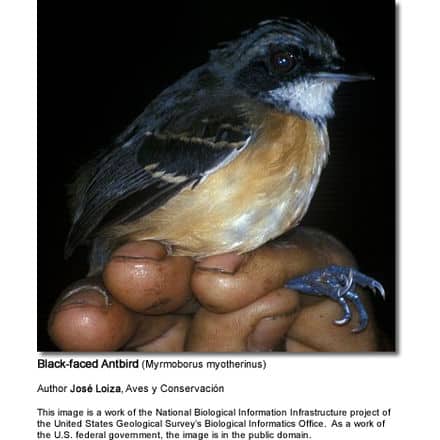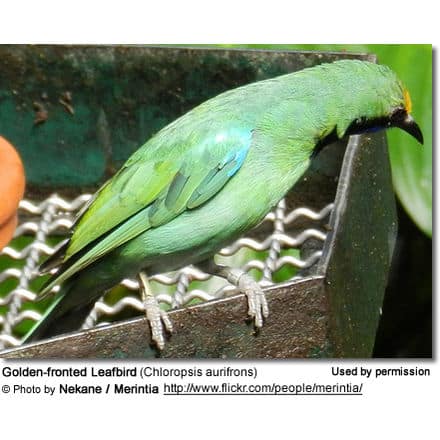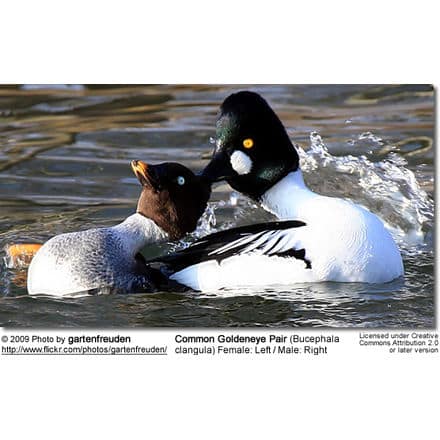Black-faced Antbirds
The Black-faced Antbirds (Myrmoborus myotherinus) is a species of bird, about 12–13 cm (5 inches) long, in the antbird family Thamnophilidae. It is endemic in a wide range across the Amazon basin. It feeds on insects and spiders and sometimes follows army ants to catch the insects disturbed by their march.
Taxonomy
There are seven subspecies currently recognised, although some of these may represent separate species and others only clinal variation, and more research is needed into the species’ taxonomy.
Description
The Black-faced Antbirds are between 12-13 cm (5 inches) long and weigh around 16-22 g. The male of the nominate race is blueish grey above, with the wings and tail slightly darker, a black face, throat and wing tips. The female is duller, mostly olive-brown with black-tipped wings and light buff underparts. The different races vary in the darkness of the male and the colours and patterns of the female.

Distribution and habitat
The Black-faced Antbird is found in a wide range of about 4,800,000 km² across the Amazon basin in Bolivia, Brazil, Colombia, Ecuador, Peru, and Venezuela. Its natural habitat is tropical moist lowland and foothill evergreen forest, generally below 1000 m. It prefers densely vegetated areas in light gaps (such as tree falls) in terra firme forest.
Food and feeding
The Black-faced Antbird feeds on insects and spiders, travelling in pairs or small family groups, usually within mixed-species feeding flocks. It progresses deliberately, hopping forward with occasional flaps and then pausing to scan for prey.
It will regularly follow swarms of army ants, to catch insects flushed by the swarms, but it is not an obligate ant-follower. At swarms, it is subordinate to obligate (or professional) ant-followers, but when they are absent it is dominant over other species.
Breeding
The nest of this species was first described in 2003 based on two nests found in Manu National Park, Peru.
The nests are oven-shaped and suspended between thin branches. The nests had four layers, an inner layer of fine palm fibres, a layer of dry leaves, a structural layer composed of flexible vine stems and an outer layer of dry leaves that made the nest difficult to see. One of the nests contained a single egg, the other two eggs. The eggs were white with a light dusting of purple spots.
Both parents participate in the incubation and feeding of the chicks. When the nest is threatened by predators the parents will give a broken-wing display to distract attention away from the nest.
Status
The worldwide population size and trends in population numbers have not been determined, but is it believed that the Black-faced Antbird is not threatened and so the species is evaluated as Least Concern on the IUCN Red List of Threatened Species.




